Posted March 27, 2025 by Rose A. McCandless, DS Manuscript Data Curation Graduate Fellow
In my descriptive work as the DS Manuscript Data Curation Graduate Fellow, I often come across manuscripts in need of description that are a little outside my range of expertise. This is why DS has an Advisory Council of experts on a wide range of manuscript traditions, including Evyn Kropf, Librarian for Middle Eastern & North African Studies and Religious Studies and Curator of the Islamic Manuscripts Collection at the University of Michigan. While I was describing manuscripts from the Sutro Collection at the California State Library, which are soon to be uploaded into the DS Catalog, Kropf provided some much-needed assistance in describing a few fantastic Islamicate manuscripts, which I wanted to highlight in this month’s blog post. Kropf noted, in her description and our communication regarding these manuscripts, that any and all of the items discussed here have great research potential and deserve greater investigation by scholars.
N.B. All descriptions of the manuscripts in this blog post were provided by Evyn Kropf; I am simply paraphrasing and presenting her thoughts on these manuscripts. All credit is owed to Kropf.
California State Library, Sutro Collection, M000119
This illuminated compendium of prayers includes al-Jazūlī’s (d.1465) Dalāʼil al-khayrāt, a litany of blessings over the Prophet Muḥammad. Numerous prayers and prayer excerpts, including prayers to ward off illness, are written in three(+) different hands on the endpapers and blank folios/flyleaves. One of the annotating hands also provides marginalia throughout the manuscript.
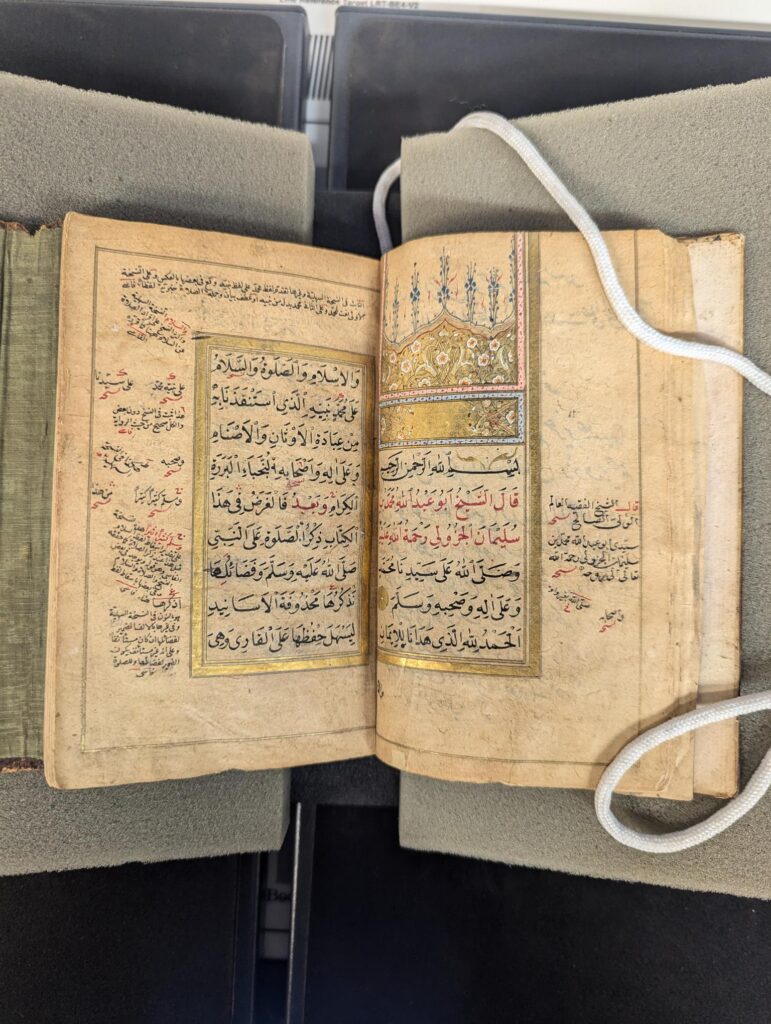
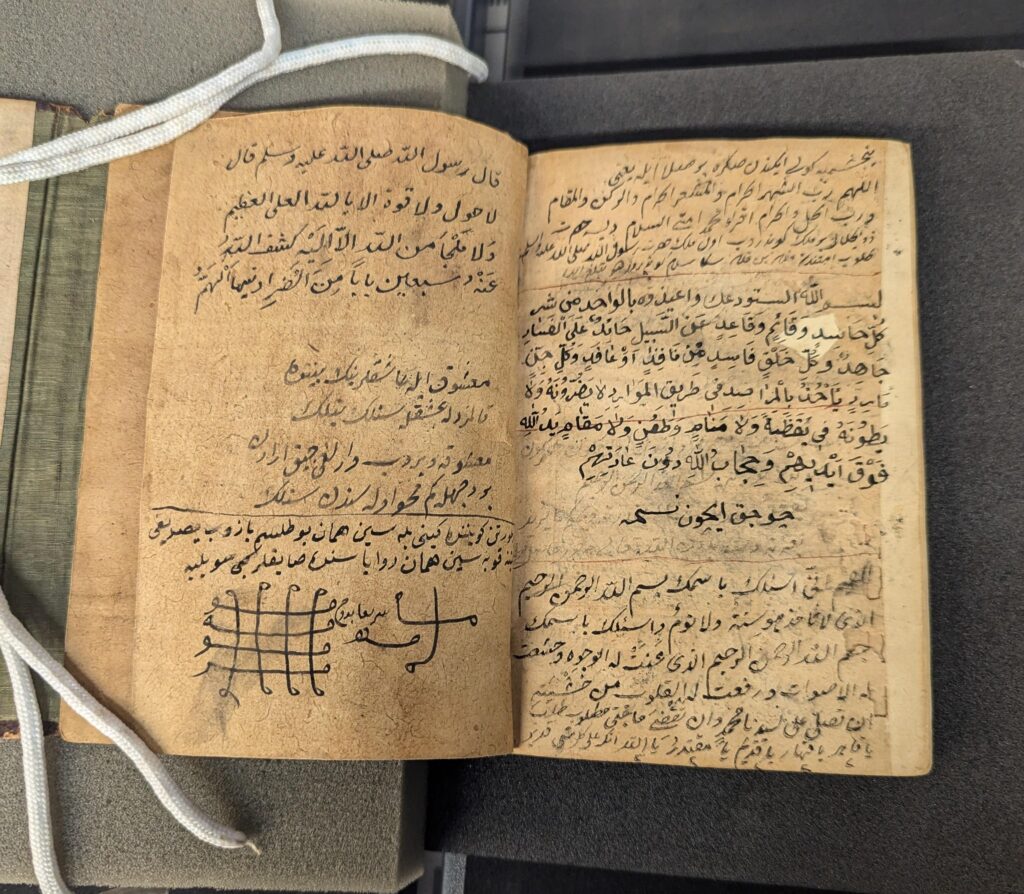
Though the manuscript does not include a colophon, the hand, decoration, etc. point to origins of mid- to late eighteenth century Ottoman production in Istanbul or the surrounding provinces. The manuscript features paintings depicting al-Masjid al-Ḥarām in Mecca and the Prophet’s mosque (al-Masjid al-Nabawī) in Medina.
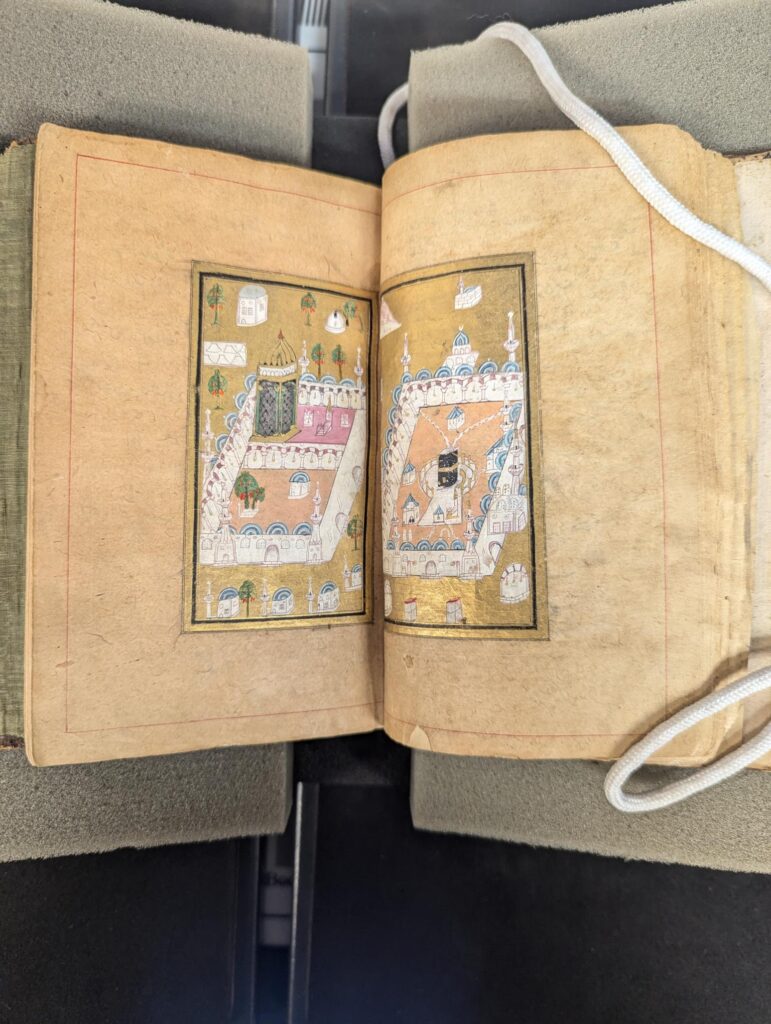
California State Library, Sutro Collection, M000120
This richly illuminated copy of the extremely famous collected poems of the poet Ḥāfiẓ (Khvājah Shams al-Dīn Muḥammad Shīrāzī, d.1390?) was copied in Qajar Iran in 1842 C.E. (23 Dhū al-Qaʻdah 1258 H, or ca. 26 December 1842 CE) by Sayyid ʻAlī (سید علی). The manuscript includes a lengthy inspection statement in the name of Sulaymān Shuʻāʻ al-Dawlah, son of Farīdūn Mīrzā (d.1854), son of crown prince ʻAbbās Mīrzā (1789-1833) ( سلیمان شعاع الدوله ابن فریدون میرزا ابن عباس میرزا ولی عهد مغفو) on the recto of opening folio. The inspection statement is dated Shaʻbān 1301 H [ca. June 1884 CE], and accompanied by Sulaymān Shuʻāʻ al-Dawlah’s seal impression (شعاع الدوله).
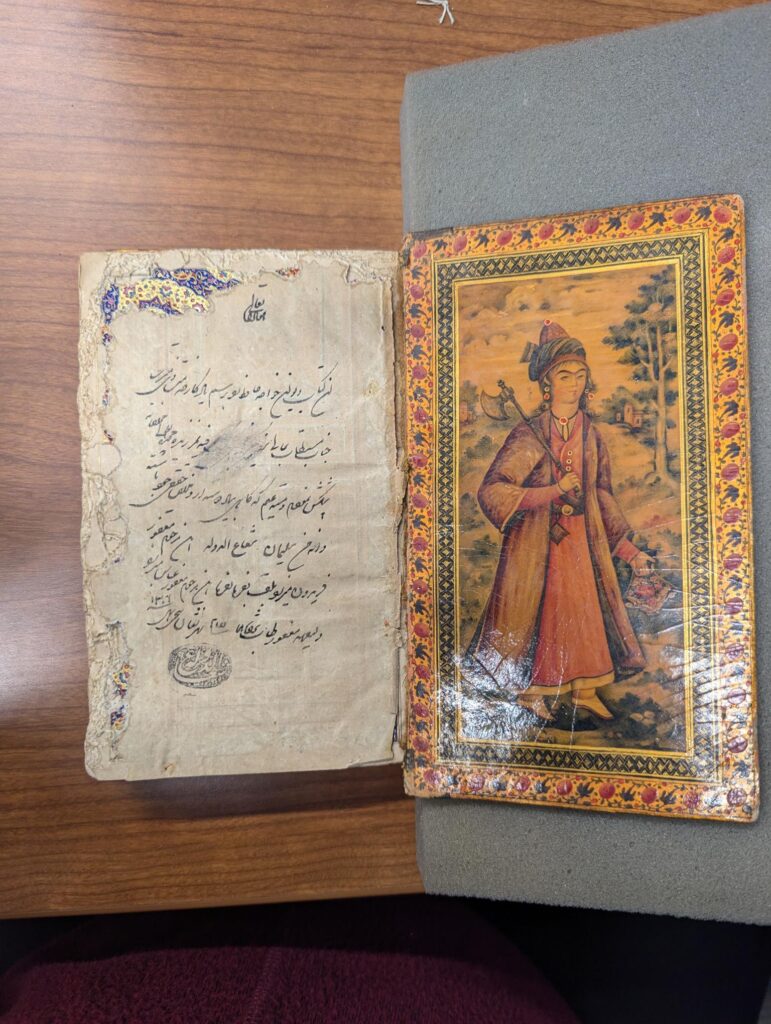
This manuscript’s binding incorporates painted lacquerwork covers with floral decoration and doublures with figural depiction.
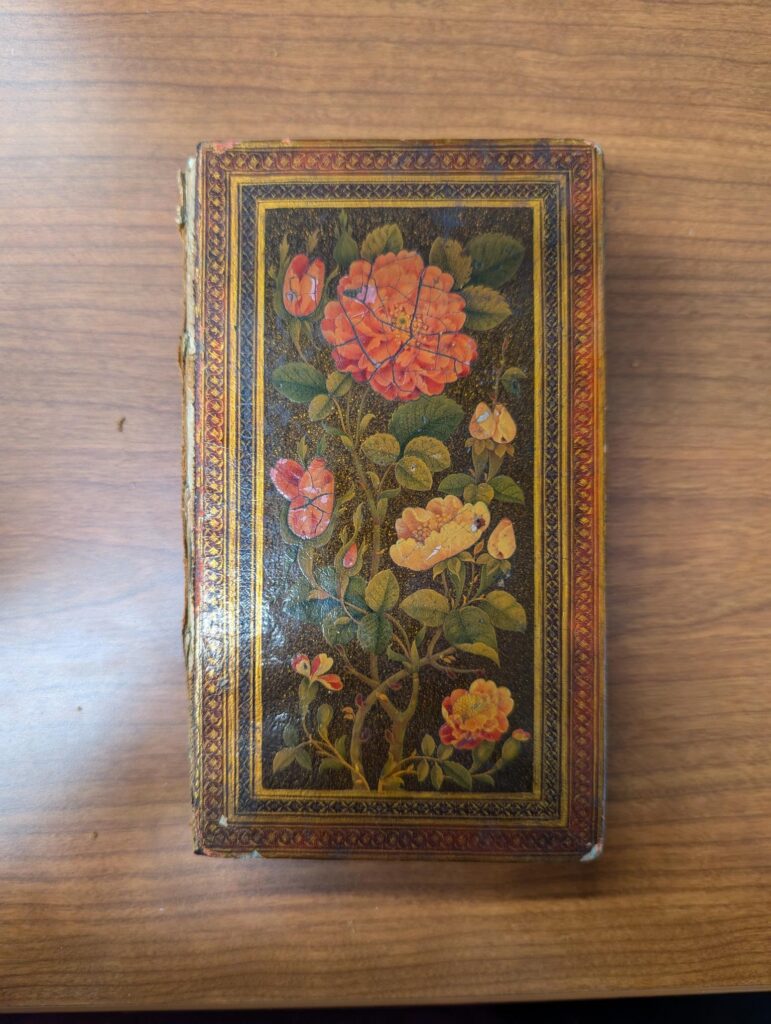
Kropf particularly noted this manuscript (and its provenance, especially) as meriting further research!
California State Library, Sutro Collection, MISC002598
This illuminated calligraphic work contains a text discussing and naming the ṣaḥābah or Companions of the Prophet who took part in the battle of Badr. (A few similar manuscripts are both in the Princeton University Library Islamic Manuscripts collection and the DS Catalog: DS17020 and DS17021.)
The manuscript was copied by Ali, a student of the famous Ottoman master Mehmet Rasim (Eğrikapılı Mehmet Râsim Efendi, d.1756). Although no transcription date is recorded in the colophon, the decoration and dates of the master calligrapher indicate production in the early to mid-eighteenth century.
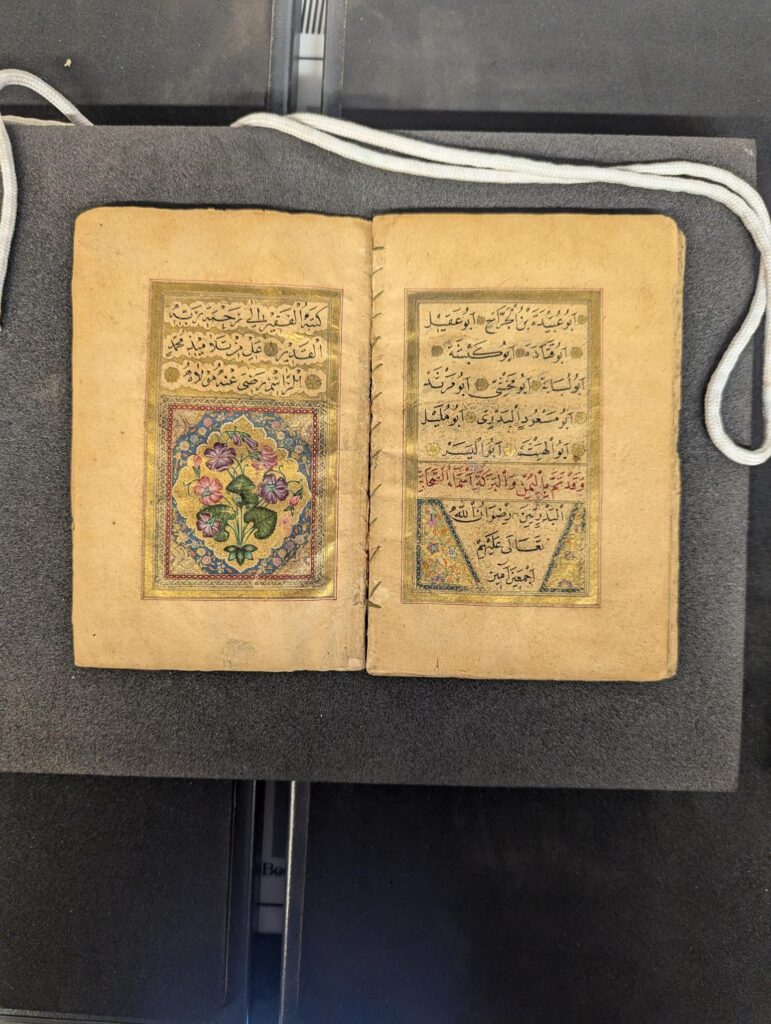
These manuscripts from the Sutro Collection are just a few examples of the incredible materials in lesser-known collections that deserve further scholarly attention. Thanks to Dr. Kropf’s expertise, we now have a clearer understanding of their significance, but there is still much to explore. As these records are added to the DS Catalog, we hope they will spark interest and inspire new research into these fascinating manuscripts and their histories.